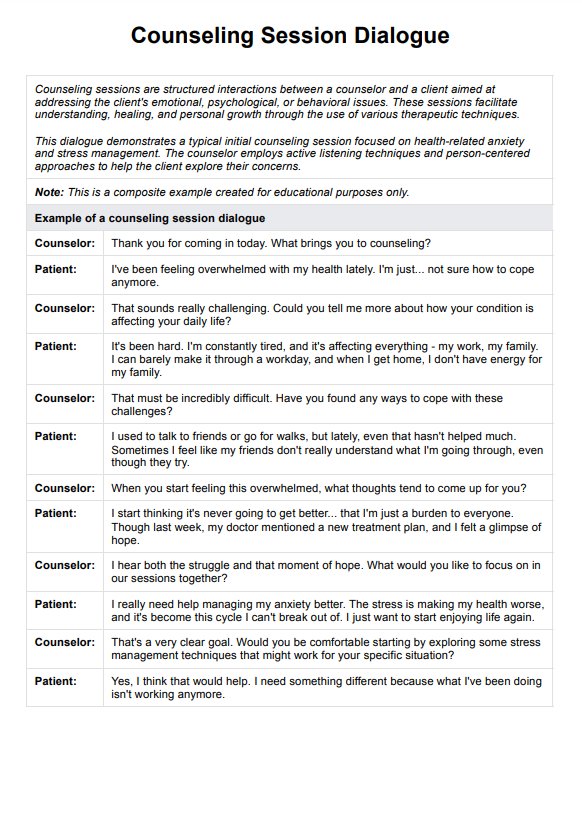An example of counseling session dialogue might begin with the counselor asking, "What brought you to seek help today" followed by the client expressing their feelings and concerns, allowing the counselor to further explore these issues in depth.

Example of Counseling Session Dialogue PDF
Use Carepatron's free Counseling Session Dialogue PDF for a reference on how to structure counseling sessions better and improve counseling skills.
Use Template
Example of Counseling Session Dialogue PDF Template
Commonly asked questions
At the start of a counseling session, it's effective to say, "I'm glad you're here today. Let's talk about what’s been on your mind lately," to set a welcoming tone and encourage open communication.
Good counseling phrases include empathetic statements such as, "It sounds like you've been through a lot; how can I support you today?" and validating comments like, "Your feelings are completely understandable given the circumstances."
EHR and practice management software
Get started for free
*No credit card required
Free
$0/usd
Unlimited clients
Telehealth
1GB of storage
Client portal text
Automated billing and online payments











